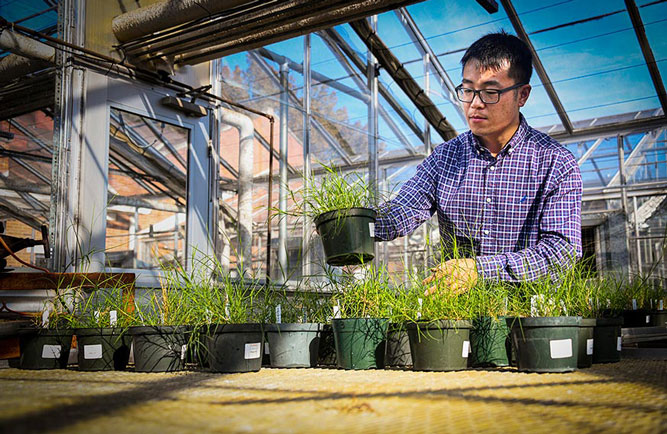Mississippi State University scientists release two new types of bermudagrass
Mississippi State University (MSU) scientists in the Agricultural and Forestry Experiment Station (MAFES) have developed two new turfgrass cultivars as the first hybrid bermudagrass cultivars unrelated to the commonly used bermudagrass 328 (Tifgreen).

(Photo: Hongxu Dong, Mississippi State University)
“The superior performance of these two grasses provides stakeholders with new options in the putting green market,” Hongxu Dong, assistant professor at MSU who specializes in turfgrass breeding and genetics, said. “These two grasses are adding novel genetic diversity to the bermudagrass cultivars, especially to the ones used on putting greens.”
Dong noted that the two types of grass, “MSB-264” and “MSB-285,” have a more upright leaf orientation than traditional bermudagrass putting green cultivars. While these are visually similar, they have different genetic compositions. Both are propagated vegetatively and are sterile triploid genotypes, meaning that they do not produce seeds.
“Both ‘MSB-264’ and ‘MSB-285’ exhibited superior turf quality, leaf texture, density, genetic color, fall and winter color retention, spring green-up speed and high percentages of living ground cover,” Dong said.
The National Turfgrass Evaluation Program (NTEP) began a five-year trial of warm-season putting green cultivars in 2013. Those studied included the MAFES bermudagrasses and commercial cultivars like Sunday, TifEagle, Tidwarf and Mini-Verde.
The breeding-to-commercialization process takes between 10 to 12 years to develop a single cultivar.
“Because the process is so long and because you have to accumulate so much data to patent and market a grass, we have 110 to 120 grasses being evaluated for athletic fields, golf courses and home lawns,” Dong said. “The breeding program is a numbers game. The more varieties you are testing, the better the chances of having some that are good enough to enter the trials and then go into production and commercialization.”










